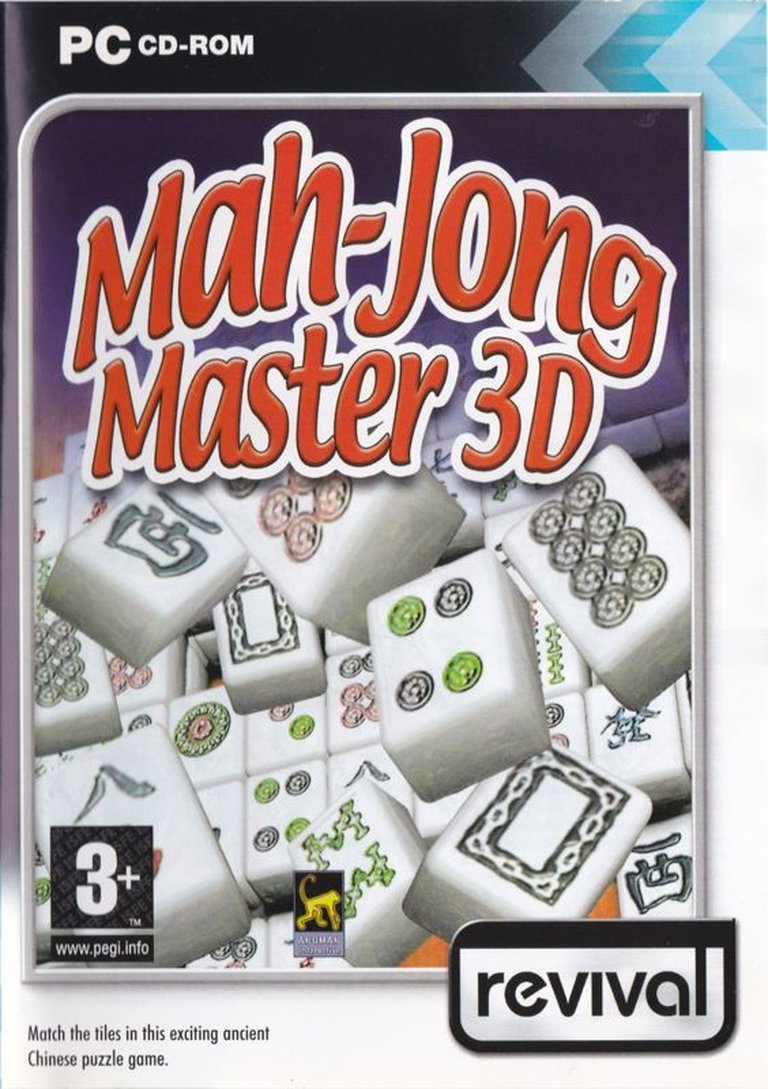- Release Year: 2004
- Platforms: Windows
- Publisher: Revival Multimedia
- Developer: Spilab
- Genre: Card, Mahjongg solitaire, Shanghai, Tile game
- Perspective: Top-down
- Game Mode: Online PVP, Single-player
- Gameplay: Solitaire, Tile matching

Description
Mah-Jong Master 3D is a 2004 mah-jong solitaire game featuring a 3D perspective with slight tile sway effects. Players can choose from various tile arrangements and screen resolutions, playing solo with three difficulty levels or online against another player. The game lacks undo/redo features and hints but allows tile reshuffling when no matches are found.
Mah-Jong Master 3D Cheats & Codes
Nintendo 64
Enter during the opening movie or introduction sequence
| Code | Effect |
|---|---|
| Up, Up, Down, Down, Left, Right, Left, Right, B, A, Start | Unlocks all 19 characters in Free Battle Kulong Mode |
Mah-Jong Master 3D: Review
Introduction
Mah-Jong Master 3D was an early entry into the modern digital mah-jong solitaire genre, aiming to enhance the classic game with 3D visuals and online multiplayer capabilities. This review will explore its legacy and determine its place in the tapestry of puzzle gaming history.
Development History & Context
Released in 2004, Mah-Jong Master 3D was jointly published by Revival Multimedia and developed by Spilab. At the time, the mah-jong solitaire market was still emerging, making this game a trailblazer in bringing the classic tile game into a virtual 3D space.
The developers, Jérôme Cayet for programming and graphics, and Fabrice Tonnellier for music, worked within the technological constraints of early 2000s hardware. The game leveraged Pentium III processors and DirectX 9.0, offering a graphical experience that was cutting-edge during its era.
In the gaming landscape of 2004, Mah-Jong Master 3D distinguished itself with its 3D environment and online multiplayer feature, which added depth beyond the standard single-player puzzle experience.
Narrative & Thematic Deep Dive
The game’s narrative is straightforward—players clear tiles by matching pairs in various 3D arrangements. While there’s no elaborate storyline, the familiar mah-jong theme taps into the cultural legacy of the ancient Chinese game.
Thematically, the game revolves around strategy, patience, and spatial awareness. The inability to see all angles (due to fixed camera) adds a layer of challenge, mimicking the的真实感 of physical games where certain areas might be out of view.
Gameplay Mechanics & Systems
The core gameplay loop centers around matching exposed tiles. The 3D presentation introduces unique spatial challenges, though the inability to rotate the view may frustrate players used to more fluid camera angles. The “shake” effect on the tile stack adds an element of dynamism but might be mere eye candy.
Key gameplay features include:
– Multiple tile arrangements
– Three difficulty settings
– Save progress functionality
– Online multiplayer (though limited to 2 players)
– Reshuffle option if stuck
Notable omissions such as lack of undo, redo, or hint features make Mah-Jong Master 3D a challenging yet potentially complaining-prone experience for casual players. The need to manually reshuffle could disrupt gameplay flow for some.
The user interface presents tile options with cursor-based selection. While simple, it might not be as intuitive as touch-based interactions found in more contemporary games.
World-Building, Art & Sound
The art style is anchored by 3D-rendered tiles with various textures (ivory, emerald, etc.), providing a visually pleasing interface. Over 100 different shaped boards, 20 backgrounds, and 8 tile textures contribute to replayability through visual variety.
Backgrounds feature LoginPage-friendly scenes like untouched misty mountains or a modern metropolis, enhancing the atmosphere. However, the fixed camera angle prevents true 3D exploration, which could limit immersion.
The music by Fabrice Tonnellier is relaxing and traditionally inspired, creating a serene gaming environment. Sound effects for tile matching add auditory feedback, though they can become repetitive over extended play sessions.
Reception & Legacy
At release, Mah-Jong Master 3D likely received positive feedback for its 3D visuals and online features. However, the lack of essential features (undo, hints) may have deterred players; a common complaint in user reviews for similar games.
Over time, games like Mah Jong Quest and Mahjongg Dimensions have incorporated more advanced features, such as dynamic camera angles, enhanced cheat options, and more engaging environments, making them contenders. Mah-Jong Master 3D’s influence is evident in these successors but remains a beloved entry for those who played it during its heyday.
Conclusion
Mah-Jong Master 3D stands as a capable and engaging entry in the mah-jong solitaire genre. While its feature set may be lacking by modern standards, it captures the essence of the classic game with a 3D twist. Its multiplayer modes and varied board layouts provide excellent replayability, making it a satisfying puzzle experience for dedicated players. However, casual gamers may find its omission of helpful features frustrating. As a historical artifact of early 3D puzzle games, Mah-Jong Master 3D deserves recognition for pushing the genre forward while maintaining its core roots.
“`